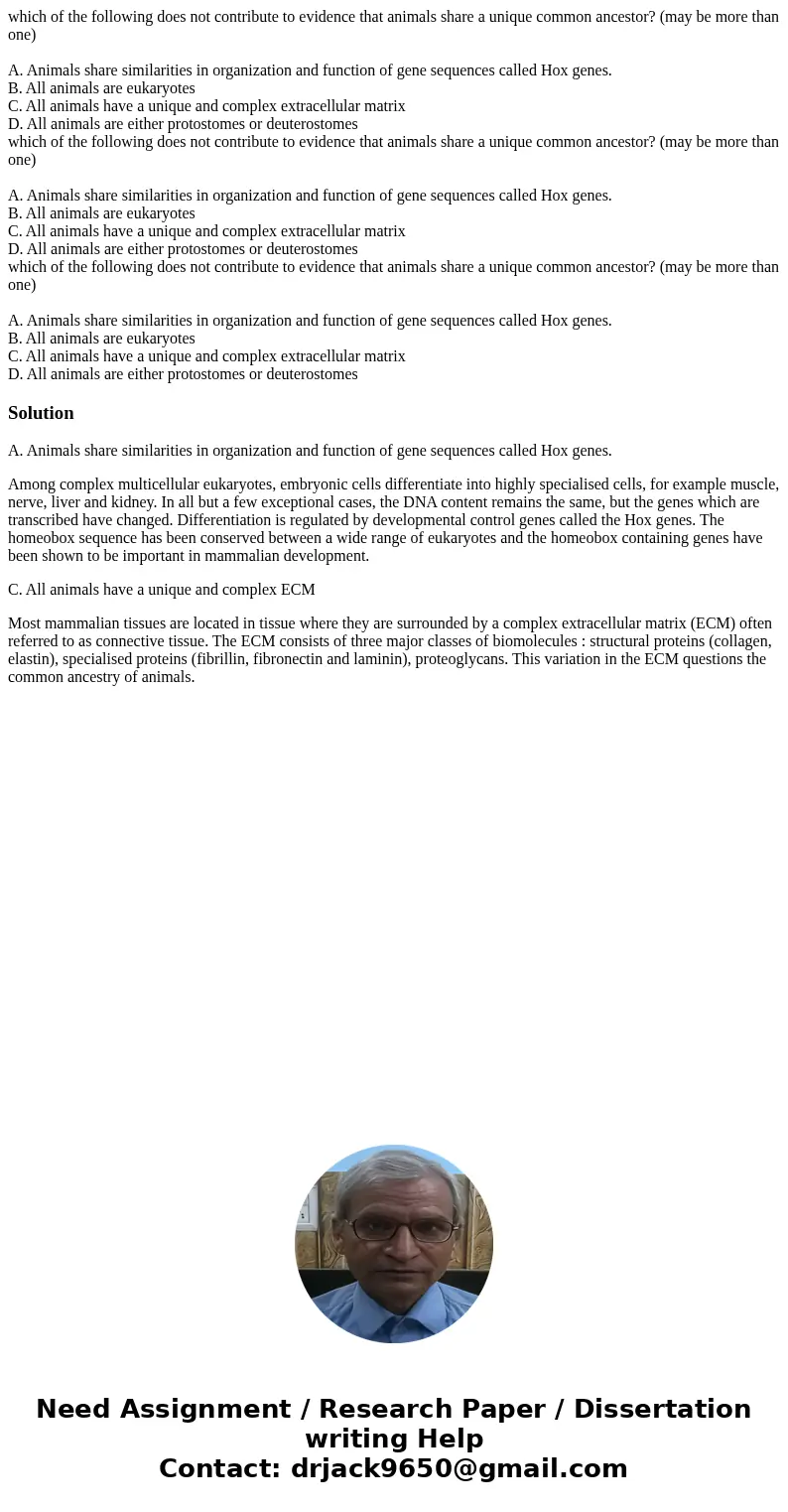which of the following does not contribute to evidence that
Solution
A. Animals share similarities in organization and function of gene sequences called Hox genes.
Among complex multicellular eukaryotes, embryonic cells differentiate into highly specialised cells, for example muscle, nerve, liver and kidney. In all but a few exceptional cases, the DNA content remains the same, but the genes which are transcribed have changed. Differentiation is regulated by developmental control genes called the Hox genes. The homeobox sequence has been conserved between a wide range of eukaryotes and the homeobox containing genes have been shown to be important in mammalian development.
C. All animals have a unique and complex ECM
Most mammalian tissues are located in tissue where they are surrounded by a complex extracellular matrix (ECM) often referred to as connective tissue. The ECM consists of three major classes of biomolecules : structural proteins (collagen, elastin), specialised proteins (fibrillin, fibronectin and laminin), proteoglycans. This variation in the ECM questions the common ancestry of animals.

 Homework Sourse
Homework Sourse